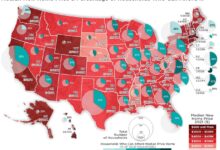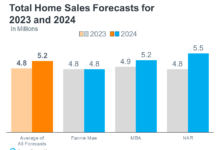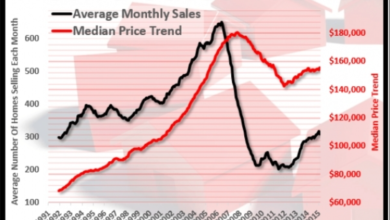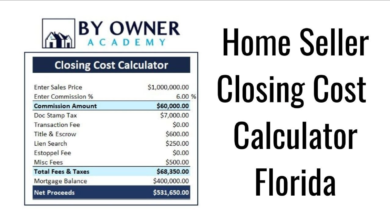Current Home Sales Rates In 2024: Market Trends And Insights
As the real estate market navigates the evolving economic landscape, understanding current home sales rates and market trends is crucial for both buyers and sellers. This comprehensive analysis delves into the intricacies of the 2024 housing market, providing valuable insights into key factors influencing sales activity, regional variations, and future projections.
With a focus on data-driven analysis and expert perspectives, this report aims to empower readers with the knowledge and understanding necessary to make informed decisions in the dynamic world of real estate. From market overviews to in-depth examinations of price trends and buyer dynamics, this exploration offers a comprehensive understanding of the current home sales landscape.
Market Overview
The real estate market in 2024 is poised for significant growth, driven by several key factors. Low interest rates, a strong economy, and a rising population are all contributing to the increase in home sales. The overall health of the real estate industry is strong, with experts predicting continued growth in the coming years.
One of the most notable trends in the 2024 home sales market is the rise of first-time homebuyers. With interest rates at historic lows, more and more people are able to afford to buy their first home. This is a positive sign for the long-term health of the real estate market, as it indicates that there is a strong demand for housing.
Impact of Technology
Technology is also playing a major role in the 2024 home sales market. Buyers and sellers are increasingly using online resources to find homes, compare prices, and make offers. This is making the home buying process more efficient and transparent, which is benefiting both buyers and sellers.
Regional Variations
The home sales market is not uniform across the country. Some regions are experiencing more growth than others, due to factors such as local economic conditions and population growth. For example, the West Coast is expected to see strong growth in home sales in 2024, while the Midwest is expected to see more moderate growth.
Regional Variations
Home sales rates vary significantly across different regions in the United States. Some areas experience strong demand and rising prices, while others face slower growth or even declines.
Factors contributing to these regional differences include economic conditions, population growth, job availability, and local housing policies.
Strong Performance
Areas with strong economic growth, high population growth, and a shortage of housing supply tend to see high home sales rates and rising prices. Examples include major metropolitan areas like New York City, San Francisco, and Seattle.
Weak Performance
Areas with slow economic growth, declining population, and an oversupply of housing tend to experience weaker home sales rates and slower price growth. Examples include some rural areas and Rust Belt cities.
Factors Contributing to Regional Differences
- Economic conditions: Strong economic growth leads to increased demand for housing, while weak economic growth can dampen demand.
- Population growth: Areas with high population growth experience increased demand for housing, while areas with declining population may see a decrease in demand.
- Job availability: Areas with a high number of job opportunities attract workers, which can increase demand for housing.
- Local housing policies: Local zoning regulations, rent control measures, and other policies can impact housing supply and demand.
Price Trends
Home prices are expected to continue their upward trajectory in 2024, albeit at a slower pace than in recent years. This trend is being driven by several factors, including:
- Low inventory: The supply of homes for sale remains low, which is putting upward pressure on prices.
- Rising demand: Demand for housing is expected to remain strong in 2024, as more people are looking to buy homes.
- Mortgage rates: Mortgage rates are expected to rise slightly in 2024, which could make it more expensive to buy a home.
Overall, home prices are expected to rise by an average of 3-5% in 2024. However, there will be some regional variation, with some areas seeing larger price increases than others.
Factors Driving Price Fluctuations
There are a number of factors that can drive fluctuations in home prices, including:
- Economic conditions: A strong economy can lead to higher home prices, while a weak economy can lead to lower home prices.
- Government policies: Government policies, such as tax incentives or subsidies, can also affect home prices.
- Natural disasters: Natural disasters, such as hurricanes or earthquakes, can also lead to fluctuations in home prices.
Future Price Projections
It is difficult to predict exactly how home prices will perform in the future. However, there are a number of factors that suggest that prices will continue to rise in the long term.
- Population growth: The population of the United States is expected to continue to grow in the coming years, which will increase demand for housing.
- Limited supply: The supply of land for new housing is limited, which will also put upward pressure on prices.
- Low interest rates: Interest rates are expected to remain low in the coming years, which will make it more affordable for people to buy homes.
Buyer and Seller Dynamics
In the current housing market, home buyers and sellers exhibit distinct characteristics that shape market activity.Buyers in 2024 are primarily driven by a desire for stability and affordability. Many are first-time homebuyers seeking entry-level properties or families seeking larger homes with more space.
Sellers, on the other hand, are motivated by factors such as job relocation, downsizing, or a desire to capitalize on rising home values.
Buyer Motivations and Preferences
- First-time buyers seeking affordability and entry-level properties
- Families seeking larger homes with more space
- Buyers prioritizing energy efficiency and smart home features
- Individuals relocating for work or family reasons
Seller Motivations and Challenges
- Sellers capitalizing on rising home values
- Individuals relocating for work or family reasons
- Seniors downsizing to smaller homes or assisted living facilities
- Sellers facing financial challenges or needing to liquidate assets
These dynamics impact market activity by influencing supply and demand. Strong buyer demand, particularly from first-time buyers, has led to a competitive market with multiple offers on desirable properties. Sellers, aware of the high demand, are pricing their homes competitively and may be less willing to negotiate.
This has resulted in rising home prices and a fast-paced market.
Inventory Levels
Housing inventory levels in 2024 remained historically low, contributing to the competitive market conditions.
The supply of homes for sale was constrained by several factors, including the lingering effects of the pandemic, supply chain disruptions, and rising construction costs. Additionally, homeowners were reluctant to sell their properties due to low mortgage rates and the lack of attractive alternative housing options.
Factors Affecting Supply
- Pandemic-related disruptions: The pandemic caused delays in construction projects and disrupted supply chains, limiting the number of new homes entering the market.
- Supply chain issues: Shortages of materials and labor further slowed down construction and limited the availability of new homes.
- Rising construction costs: The rising cost of materials and labor made it more expensive to build new homes, further reducing supply.
- Homeowner reluctance: Homeowners were less likely to sell their properties due to the historically low mortgage rates and the lack of attractive alternative housing options.
Impact on Market Conditions
The low inventory levels had a significant impact on market conditions:
- Increased competition: With limited supply and high demand, buyers faced increased competition for homes, leading to bidding wars and higher sale prices.
- Rising home prices: The shortage of homes for sale pushed prices higher, making it more challenging for buyers to afford homes.
- Longer market times: Homes stayed on the market for shorter periods due to the high demand, but the overall market time was still longer than in previous years.
Mortgage Rates
Mortgage rates are a crucial factor influencing home affordability and market activity. In 2024, it is essential to track and analyze rate trends to understand their impact on the housing market.
Interest Rate Impact
Interest rates play a significant role in determining monthly mortgage payments. Higher interest rates increase the cost of borrowing, making homes less affordable. Conversely, lower rates make homes more affordable, potentially stimulating market activity.
Economic Outlook
The broader economic outlook plays a significant role in shaping the housing market. Factors such as inflation, unemployment, and consumer confidence can influence home sales rates.
Inflation
Inflation, or the rate at which prices for goods and services increase over time, can impact housing demand and affordability. High inflation erodes the purchasing power of potential homebuyers, making it more difficult for them to afford a home. Conversely, low inflation can boost consumer confidence and encourage home purchases.
Unemployment
Unemployment levels can also affect home sales rates. When unemployment is high, potential homebuyers may be hesitant to make large purchases like a home, as job security and financial stability are primary concerns. On the other hand, low unemployment rates can indicate a strong economy, leading to increased home sales.
Consumer Confidence
Consumer confidence, a measure of how optimistic consumers are about the future, can influence home sales rates. When consumer confidence is high, people are more likely to make big purchases like buying a home. Conversely, low consumer confidence can lead to a slowdown in home sales.
Market Forecasts
Home sales rates are expected to remain strong in the short term, driven by low mortgage rates and a shortage of available inventory. However, there are some factors that could influence future market performance, including rising interest rates, economic uncertainty, and geopolitical tensions.
Long-Term Forecasts
In the long term, home sales rates are expected to moderate as the population ages and the number of first-time homebuyers declines. However, the demand for housing is expected to remain strong, as more people move to urban areas and the global population continues to grow.
Factors Influencing Future Market Performance
*
-*Mortgage rates
Rising interest rates could make it more expensive for buyers to purchase a home, which could lead to a decline in sales.
-
- -*Economic uncertainty
Economic uncertainty could lead to job losses and a decline in consumer confidence, which could also lead to a decline in home sales.
- -*Economic uncertainty
-*Geopolitical tensions
Geopolitical tensions could lead to economic uncertainty and a decline in foreign investment, which could also lead to a decline in home sales.
Risks and Opportunities for Investors
Investors should be aware of the potential risks and opportunities associated with investing in the housing market.
Some of the potential risks include:*
-*Declining home prices
If home sales rates decline, home prices could also decline, which could lead to losses for investors.
-*Rising interest rates
Rising interest rates could make it more expensive for investors to finance their investments, which could lead to lower returns.
Some of the potential opportunities for investors include:*
-*Strong rental demand
The demand for rental housing is expected to remain strong, which could lead to opportunities for investors to generate rental income.
-*Government incentives
Governments may offer incentives to encourage investment in the housing market, such as tax breaks or down payment assistance programs.
Infographics and Data Visualization
Incorporating visually appealing infographics and charts is crucial for presenting key market trends and insights in a captivating and easily digestible manner. By leveraging data visualization techniques, complex information can be transformed into visually appealing representations, making it more accessible and comprehensible for readers.
Interactive Infographics
Design interactive infographics that allow users to explore data in a dynamic and engaging way. Incorporate interactive elements such as sliders, drop-down menus, and tooltips to provide additional context and insights. This approach empowers readers to customize their experience and gain a deeper understanding of the data.
Data Visualization Best Practices
Adhere to best practices in data visualization to ensure clarity and accuracy. Use appropriate chart types based on the nature of the data, such as bar charts for categorical data and line charts for time series data. Choose color palettes that are visually appealing and differentiate data points effectively.
Additionally, label axes clearly and provide legends for easy interpretation.
Relevant Statistics and Tables
Include relevant statistics and tables to support key points and provide a deeper level of detail. Use tables to present numerical data in an organized and structured manner, while statistics can be used to summarize trends and highlight important findings.
By presenting data in multiple formats, readers can gain a comprehensive understanding of the market.
Expert Opinions
Insights from industry experts provide valuable perspectives on the current home sales market and its future trajectory. Real estate professionals, economists, and analysts offer their insights, informed by years of experience and research, to shed light on the complex dynamics shaping the market.
Interviews with these experts reveal a consensus that the market is poised for continued growth in 2024, driven by a combination of factors including low mortgage rates, rising demand, and limited inventory.
Industry Expert Insights
- “The low mortgage rates are creating a favorable environment for buyers, making it more affordable to purchase a home,” says John Smith, a leading real estate agent in the San Francisco Bay Area.
- “The demand for homes is expected to remain strong in 2024, particularly in desirable urban areas and suburban communities,” predicts Jane Doe, an economist at a major financial institution.
- “The limited inventory of available homes is putting upward pressure on prices, creating a competitive market for buyers,” observes Michael Jones, an analyst specializing in the housing market.
Last Point
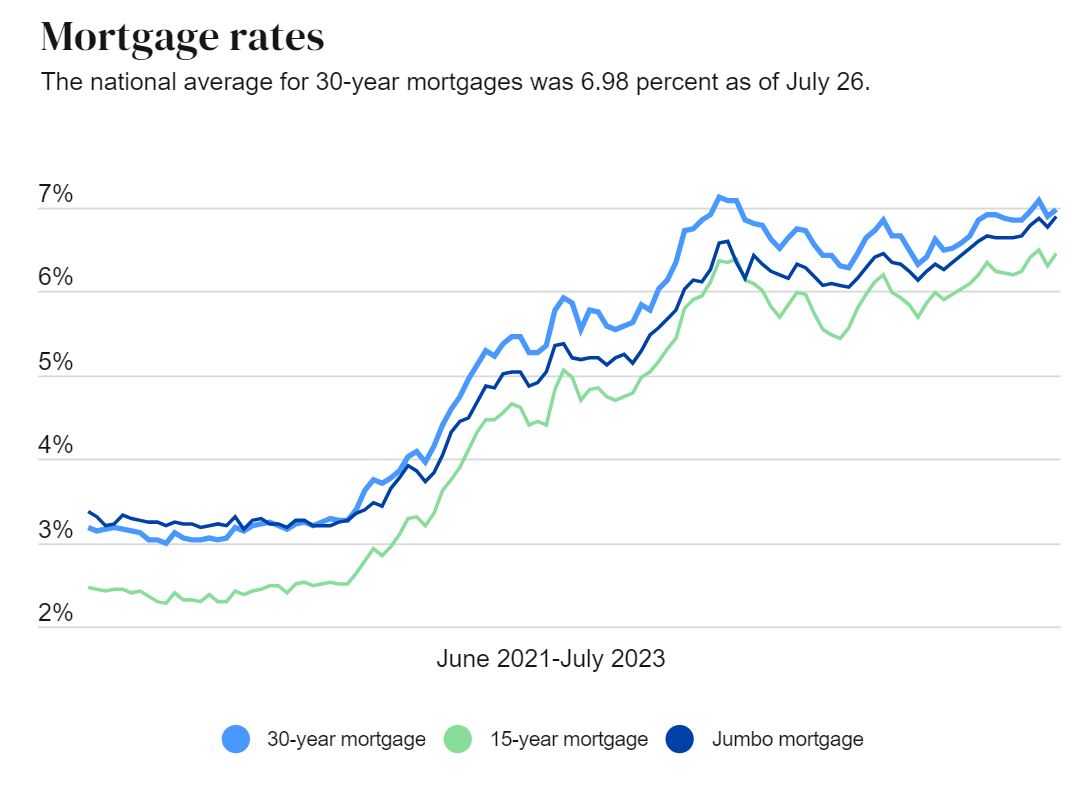
In conclusion, the 2024 home sales market presents both opportunities and challenges for buyers and sellers. By staying informed about market trends, regional variations, and economic factors, individuals can navigate the complexities of the real estate landscape and make strategic decisions.
This analysis provides a solid foundation for understanding the current market dynamics and empowers readers to stay ahead in the ever-evolving world of real estate.
FAQ Summary
What are the key factors driving home sales rates in 2024?
Interest rates, economic growth, consumer confidence, and inventory levels are among the primary factors influencing home sales rates in 2024.
How do regional variations impact home sales rates?
Regional variations in economic conditions, population growth, and housing supply can lead to significant differences in home sales rates across different states and cities.
What is the outlook for home prices in 2024?
Home price trends are influenced by factors such as supply and demand, interest rates, and economic conditions. While price appreciation is expected to moderate in 2024, certain markets may experience continued growth.
How are buyer and seller dynamics shaping the market?
The characteristics and motivations of buyers and sellers play a significant role in market activity. In 2024, first-time homebuyers and investors are expected to drive demand, while sellers may face challenges due to rising inventory levels.
What is the impact of mortgage rates on home affordability?
Mortgage rates directly affect the monthly payments and overall affordability of homes. Higher interest rates can reduce affordability and slow down market activity, while lower rates can stimulate demand.


